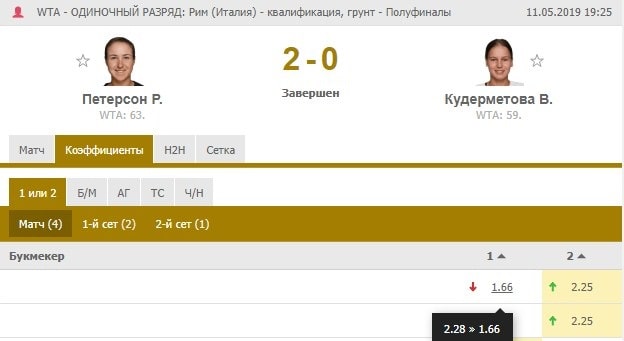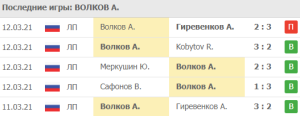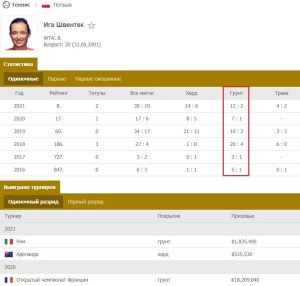
Any rating tournament consists of two parts: qualification and main draw. Each part of the tournament “lives” by its own rules and has distinctive features, which is why the approach to betting on them has strong differences. In the qualification and the main draw, experienced bettors use different tactics, which will be discussed in the review.
Content
- Qualifying matches
- Main Draw Matches
- Summing up
Qualifying matches
Qualification is a favorite segment of the tournament for experienced bettors. Everything in tennis is just like in football. When qualifying starts in European competitions, Europa League and Champions League, bookmakers make too many mistakes by setting the odds incorrectly. This is due to a lack of understanding of the state of the teams when the championships have not yet begun, with each club representing a separate country. And it is sometimes difficult to compare the level of the championships themselves. All this applies to tennis.
If you are still more interested in football, then you can learn more about the specifics of betting on qualifying matches for European cups here. And national teams – here
Many tennis players who recently took part in ITF competitions, Challengers, take part in the qualification of rating tournaments. The winner of an ITF category tournament may not always qualify for a top competition. Recently highly rated players can also take part in qualified rounds, but they have swum a lot recently and have dropped significantly in the world rankings.
Such tennis players can either play powerfully or continue to fall. In such a confusion, bookmaker analysts do not always fully understand the real balance of power, which leads to frequent distortions in the coefficients. And this is especially true for the first round of qualifying.
Experienced bettors, who closely monitor a number of young talents, tennis players who are rapidly gaining shape, their fellow countrymen, quickly discover such imbalances and place bets at a high coefficient.
What about those who don't want to spend a lot of time tracking performances or just analyzing all matches of the 1st round of qualification? Pay attention to strong loads of obvious outsiders, which is rare during qualification without good reason.

The strongest load was observed in the first round of qualifying for the women's tournament in Rome for the victory of the Swedish tennis player, Rebecca Peterson. Having seen such a situation, the user must analyze what this load is connected with.
And it is connected with one detail. Peterson and Kudermetova in the spring of 2019 showed approximately the same level of play. On April 11, these tennis players met in Switzerland, where Kudermetova won in a bitter struggle. After that, over the next month, both tennis players had a series of sparring sessions, demonstrating good tennis.
And exactly one month later they met again in qualifying in Rome. In reality, the analysts of the offices were obliged to set approximately equal coefficients for the victory of each athlete, but for some reason they made Kudermetova a clear favorite, it was a clear bias. Moreover, one should take into account the crazy motivation of the Swede to win after her recent defeat. All this really made it possible to rely on the Swede.
So much attention is paid to this sparring with one goal: having seen a strong load on an outsider, the user must objectively analyze the highlighted sparring and decide whether to agree with it or not. If the analysis has confirmed the correctness of the load, then the bettor can make a promising bet. And here it is worth noting that the bettor makes not a 100% winning bet, but a promising one, which has the likelihood of losing.
To make it easier to analyze such situations, we recommend that you familiarize yourself with the material on betting on outsiders in tennis.
The qualification consists of 2-3 rounds, bookmakers usually make serious mistakes in the first round, then, based on the results of the first sparring matches, bookmakers' analysts set extremely competent odds.
Experienced bettors at this time go to live bets, someone is waiting for the end of the qualification in order to carefully study the level of play of the winners of the qualification and see who they got into opponents in the main draw.
Main Draw Matches
In the first two rounds, you need to look for strong distortions and overshoots. At this stage, more rated players come into play, but with what goals they enter the fight, in what emotional state and level of play, it is not always clear. This again causes big problems for the analysts of the offices, who do not always set the coefficients correctly.
At this stage, strong unreasonable loads appear when young users misjudge the strength of a rating player who did not take part in the qualification. For this reason, you should pay attention to all the strong drops of rated players who started the fight with the main part of the tournament.
In the 1/32 finals of Wimbledon, a strong load was observed on the victory of a more rated player, who was the clear favorite. But the reason for this was not only the world rating and the higher class of Simon's game. There was another good reason.
9 days before the meeting at Wimbledon, Simon and Sandgren met, then Simon celebrated the victory with a score of 2: 0. It was on the result of this meeting that many users made a strong emphasis, believing that since Simon won then, he would win and now, forgetting about Sandgren's overwhelming motivation, his playing honor was at stake. It was the motivation in this meeting that made it possible to make a promising bet and put an outspoken outsider in games on a positive head start. In this case, the heavy load was unjustified.
It is worth noting that, as in both cases considered, a big role in choosing a bet was played by the history of face-to-face meetings, where, after a recent loss, highly motivated players tried to rehabilitate themselves and they succeeded. But motivation does not always allow winning victories, as it was in this case.
There is only one huge difference here. Osaka, which was highly motivated to beat Putintseva after a recent defeat, had a too low odds. In the situations discussed above, each time, players who were strongly motivated after recent defeats had high odds, and this is called betting on a promising option at a high odds, and not at a low one, as in the case of Osaka.
At the end of the first two rounds, when there are often unreasonable distortions and overloads, bettors in subsequent rounds go into the game online. On the basis of previously played matches, the analysts of the bookmakers begin to set the odds very accurately, unreasonable distortions and oversights are extremely rare, all this makes them go into the game at live bets.
How to correctly place online tennis bets is detailed in a separate article.
Summing up
Roughly speaking, the tactics of the game are extremely simple, both in qualifying and in the matches of the main draw. Bettor in the first rounds of qualification and the main draw, when the line is full of distortions, and in the main draw also unreasonable loads, makes promising bets at a high coefficient. When, for objective reasons, there are too few such moments in the later rounds, it's time to make live bets.


